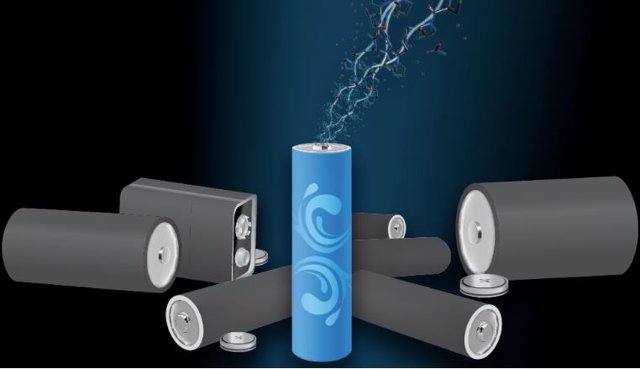5 Apr. (EUROPE PRESS) –
researchers of the Texas A&M University have discovered a 1,000% difference in the storage capacity of metal-free and water-based battery electrodes.
These batteries are different from lithium ion batteries that contain cobalt. The group’s goal of investigating metal-free batteries stems from having better control over the US supply chain, as cobalt and lithium are imported. This safer chemistry would also prevent battery fires.
Chemical engineering professor Jodie Lutkenhaus, and chemistry assistant professor Daniel Tabor, have published their findings on non-lithium batteries in Nature Materials.
“There would no longer be battery fires because it’s water-based,” Lutkenhaus said. it’s a statement. “In the future, if material shortages are predicted, the price of lithium-ion batteries will increase significantly. If we have this alternative battery, we can turn to this chemistry, where the supply is much more stable because we can make them here in the States States and the materials to make them are here.”
Lutkenhaus said that aqueous batteries consist of a cathode, an electrolyte, and an anode. The cathodes and anodes are polymers that can store energy, and the electrolyte is water mixed with organic salts. The electrolyte is key to ion conduction and energy storage through its interactions with the electrode.
“If an electrode swells too much during the cycle, then it can’t conduct electrons very well and all performance is lost,” he said. “I think there is a 1,000% difference in energy storage capacity, depending on the choice of electrolyte due to swelling effects.”
According to his paper, redox-active non-conjugated radical polymers (electrodes) are promising candidates for metal-free aqueous batteries due to the polymers’ high discharge voltage and rapid redox kinetics. The reaction is complex and difficult to solve due to the simultaneous transfer of electrons, ions and water molecules.
Tabor’s research group supplemented the experimental efforts with simulation and computational analysis. The simulations gave insight into the microscopic picture at the molecular scale of the structure and dynamics.
“Theory and experiment often work closely together to understand these materials. One of the new things we’re doing computationally in this paper is that we actually charge the electrode to multiple states of charge and see how the environment responds to this chargeTaber said.
The researchers macroscopically looked at whether the battery’s cathode performed better in the presence of certain types of salts by accurately measuring the amount of water and salt that enters the battery while it is running.
“We would like to expand our simulations to future systems. We needed to confirm our theory of what are the forces driving that type of water and solvent injection,” Tabor said. “With this new energy storage technology, this is a push towards lithium-free batteries. A better picture at the molecular level of what makes some battery electrodes work better than others, and this gives us provides strong evidence of where to go in materials design.”













